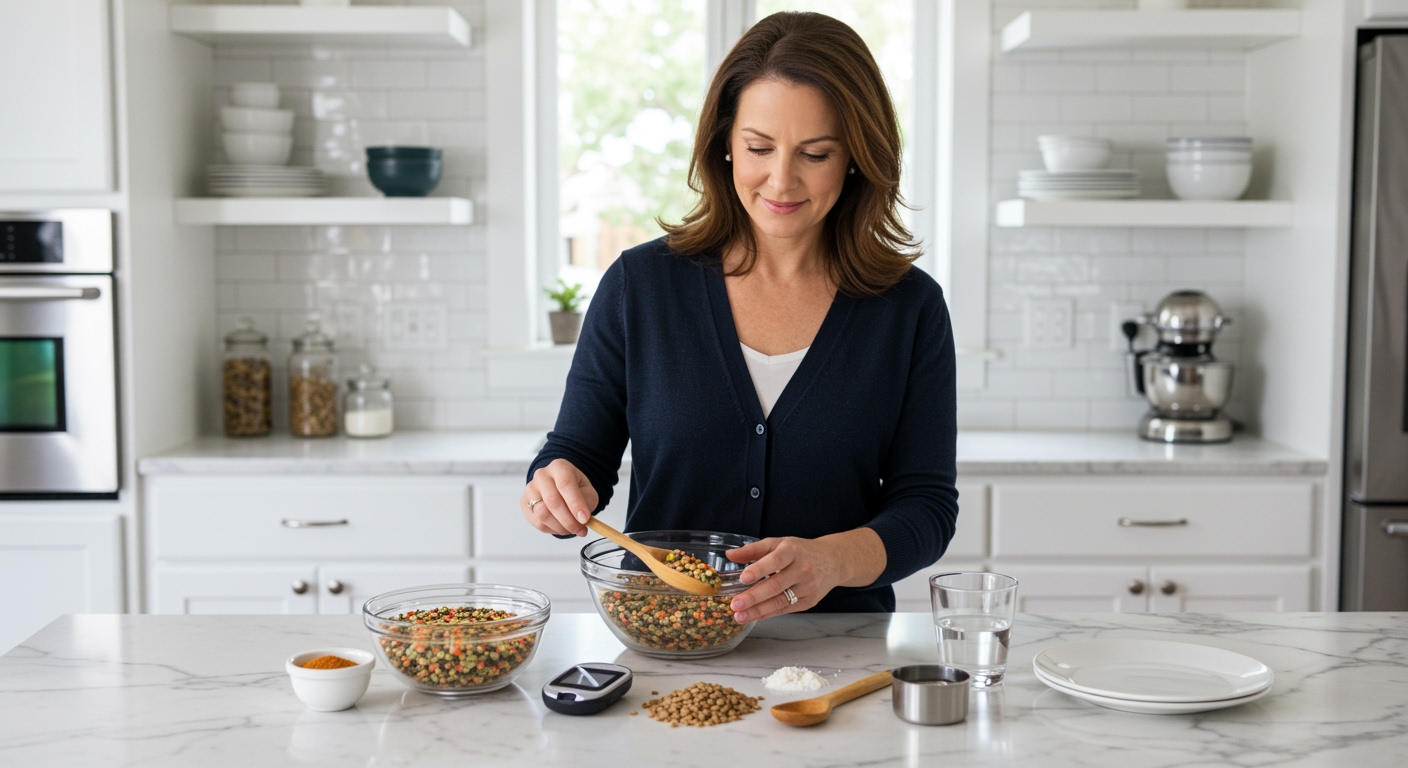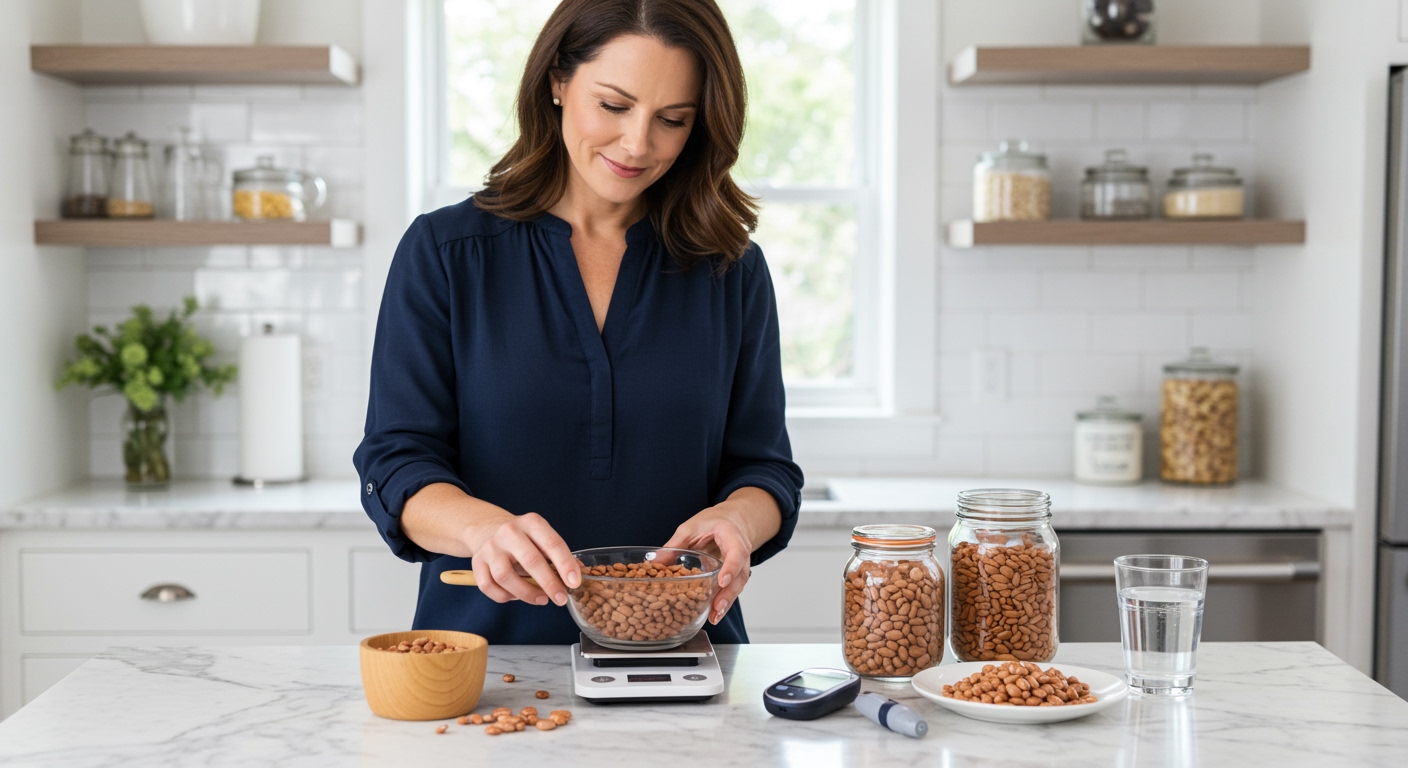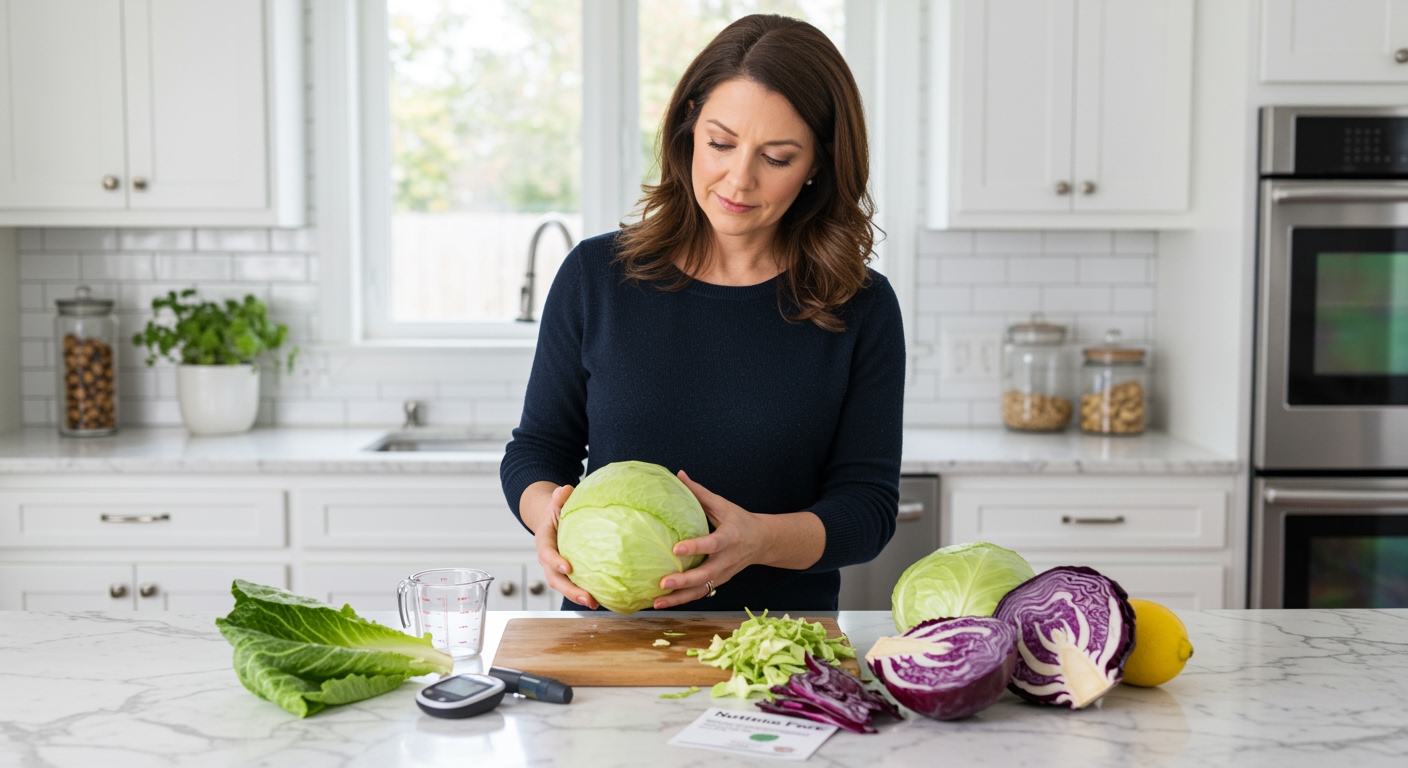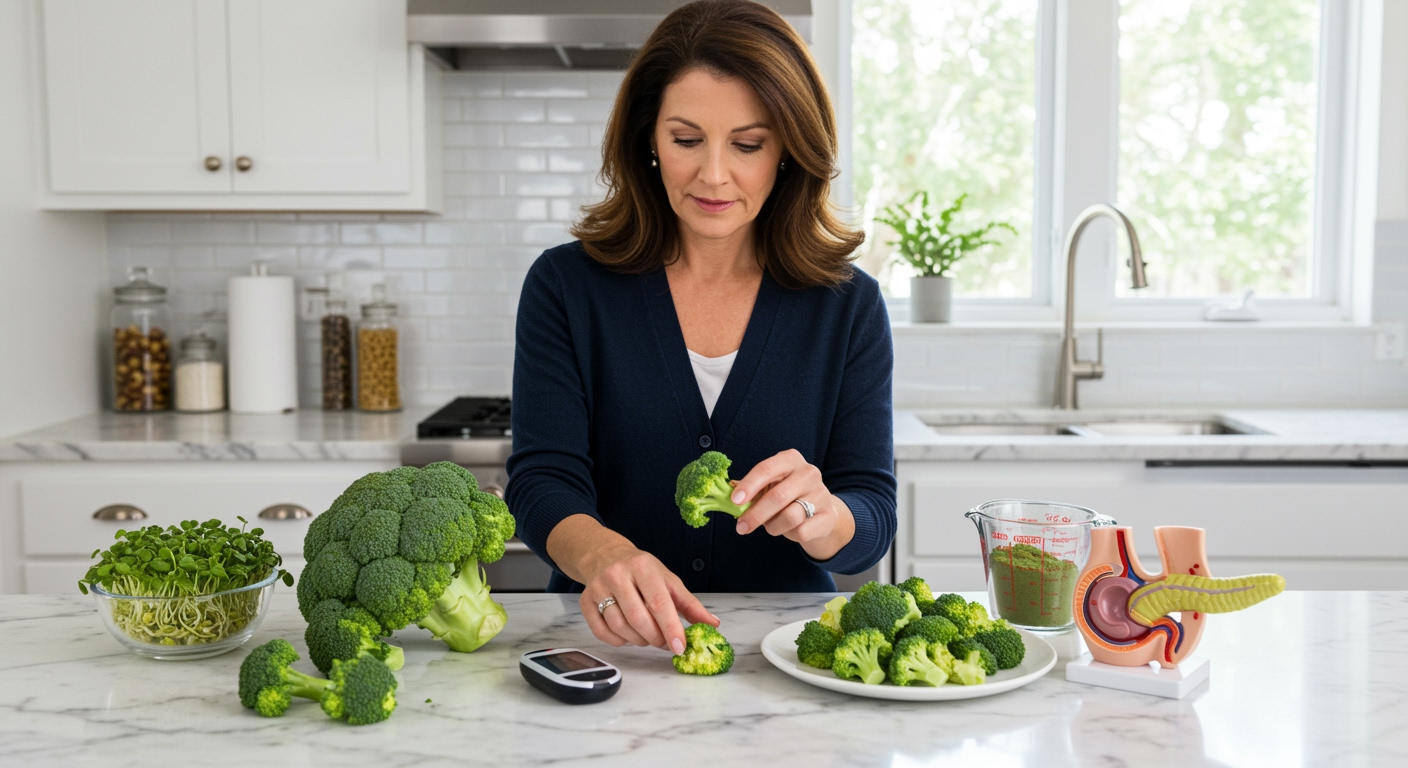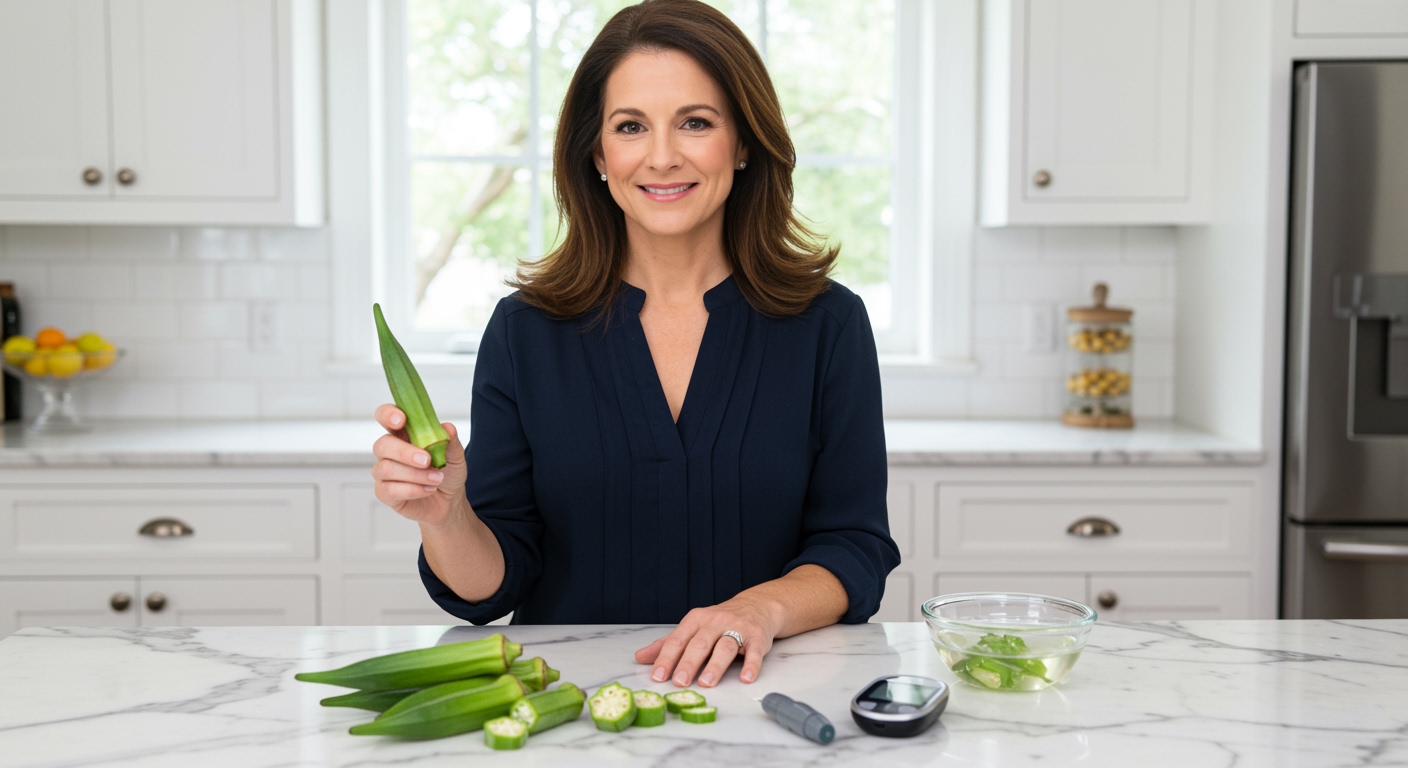✪ Key Takeaway: Lentils are excellent for diabetes because they have a low glycemic index and help stabilize blood sugar levels naturally.
Introduction
Your doctor just told you that you have diabetes or prediabetes.
Now you are wondering which foods will spike your blood sugar and which ones will keep it stable. You have heard conflicting information about lentils and whether they are safe for people with diabetes to eat regularly.
Hi, I am Abdur, your nutrition coach and today I am going to explain exactly how lentils affect your blood sugar and why they should be part of your diabetes management plan.
What Makes Lentils Different From Other Carbs?
Lentils belong to a special group of foods called legumes that behave very differently from regular carbohydrates in your body.
Unlike white bread or rice that break down quickly into sugar, lentils contain a unique combination of complex carbohydrates, fiber, and protein that slows down digestion.
This slower digestion process means your blood sugar rises gradually instead of spiking suddenly after you eat them.
The glycemic index of lentils ranges from 21 to 52 depending on the variety, which puts them in the low to moderate category.
For comparison, white bread has a glycemic index of around 75, which explains why lentils are much safer for your blood sugar control.
Research shows that people with diabetes who eat lentils regularly have better long-term blood sugar control compared to those who avoid legumes completely.
✪ Fact: Red lentils have the lowest glycemic index at 21, making them the best choice for blood sugar control.
How Do Lentils Actually Lower Blood Sugar?
The magic happens in your digestive system when lentils interact with other foods you eat during the same meal.
Lentils contain high amounts of soluble fiber that forms a gel-like substance in your stomach and small intestine.
This gel slows down the absorption of glucose from all the foods in your meal, not just the lentils themselves.
Scientists call this the second meal effect, where eating lentils at lunch can even help control your blood sugar response to dinner hours later.
The protein in lentils also triggers the release of hormones that help your body use insulin more effectively.
Studies show that adding just half a cup of lentils to a meal containing rice can reduce the overall blood sugar spike by up to 35 percent.
This means you can still enjoy moderate amounts of higher glycemic foods when you pair them strategically with lentils.
✪ Pro Tip: Eat lentils before or with higher carb foods to maximize their blood sugar stabilizing effect.
Which Type Of Lentils Work Best For Diabetes?
Not all lentils are created equal when it comes to managing your blood sugar levels effectively.
Red lentils cook the fastest but also have the most gentle impact on blood glucose, making them perfect for people who are just starting to manage diabetes.
Green and brown lentils take longer to cook but provide more fiber and protein per serving, which means better satiety and blood sugar control.
Black beluga lentils have the highest antioxidant content and maintain their shape well after cooking, making them ideal for salads and cold dishes.
The cooking method also affects how lentils impact your blood sugar response to meals.
Lentils that are cooked until very soft will raise blood sugar slightly more than those cooked al dente with a bit of firmness remaining.
Canned lentils are convenient but often contain added sodium, so rinse them thoroughly before eating to remove excess salt that can affect blood pressure.
✪ Note: Sprouted lentils have even lower glycemic impact but require more preparation time and food safety precautions.
How Much Should You Eat And When?
The ideal serving size of lentils for people with diabetes is about half a cup of cooked lentils per meal.
This amount provides approximately 15 grams of carbohydrates, which fits well into most diabetes meal plans without causing blood sugar spikes.
Timing matters just as much as portion size when you are trying to optimize blood sugar control with lentils.
Eating lentils at the beginning of your meal or as part of the first course helps slow down the absorption of carbohydrates from other foods.
Many people with diabetes find that having a small lentil salad before their main course helps prevent the after-meal blood sugar surge.
You can safely eat lentils daily as long as you account for their carbohydrate content in your overall meal planning and monitor your blood glucose response.
Start with smaller portions if you are not used to eating high-fiber foods, as your digestive system needs time to adjust to prevent bloating or gas.
✪ Pro Tip: Test your blood sugar 2 hours after eating lentils to see how your body responds individually.
What Are The Potential Concerns?
While lentils are generally excellent for diabetes management, there are a few situations where you need to be more careful.
Some people experience digestive discomfort when they first start eating lentils regularly, including bloating, gas, or stomach upset.
This usually resolves within a few weeks as your gut bacteria adapt to processing the increased fiber intake from legumes.
Lentils contain compounds called antinutrients that can interfere with the absorption of certain minerals like iron and zinc.
However, proper cooking eliminates most of these concerns, and the benefits of eating lentils far outweigh these minor drawbacks for most people.
If you take diabetes medications, especially insulin, you may need to adjust your doses when you start eating lentils regularly because they can improve insulin sensitivity.
Always work with your healthcare provider to monitor your blood sugar patterns and medication needs when making significant dietary changes.
✪ Note: Soaking dried lentils overnight and discarding the water reduces antinutrients and improves digestibility.
The Bottom Line
Lentils are one of the best carbohydrate choices for people with diabetes because they provide steady energy without causing dangerous blood sugar spikes.
The foods that stabilize your blood sugar today will protect your health for decades to come. Start with small portions, choose the variety that works best for your taste preferences, and monitor how your body responds to find your optimal serving size.
I would love to hear about your experience with lentils and diabetes management in the comments below, so please share your questions, success stories, or any concerns you might have.
References
At NutritionCrown, we use quality and credible sources to ensure our content is accurate and trustworthy. Below are the sources referenced in creating this article:
